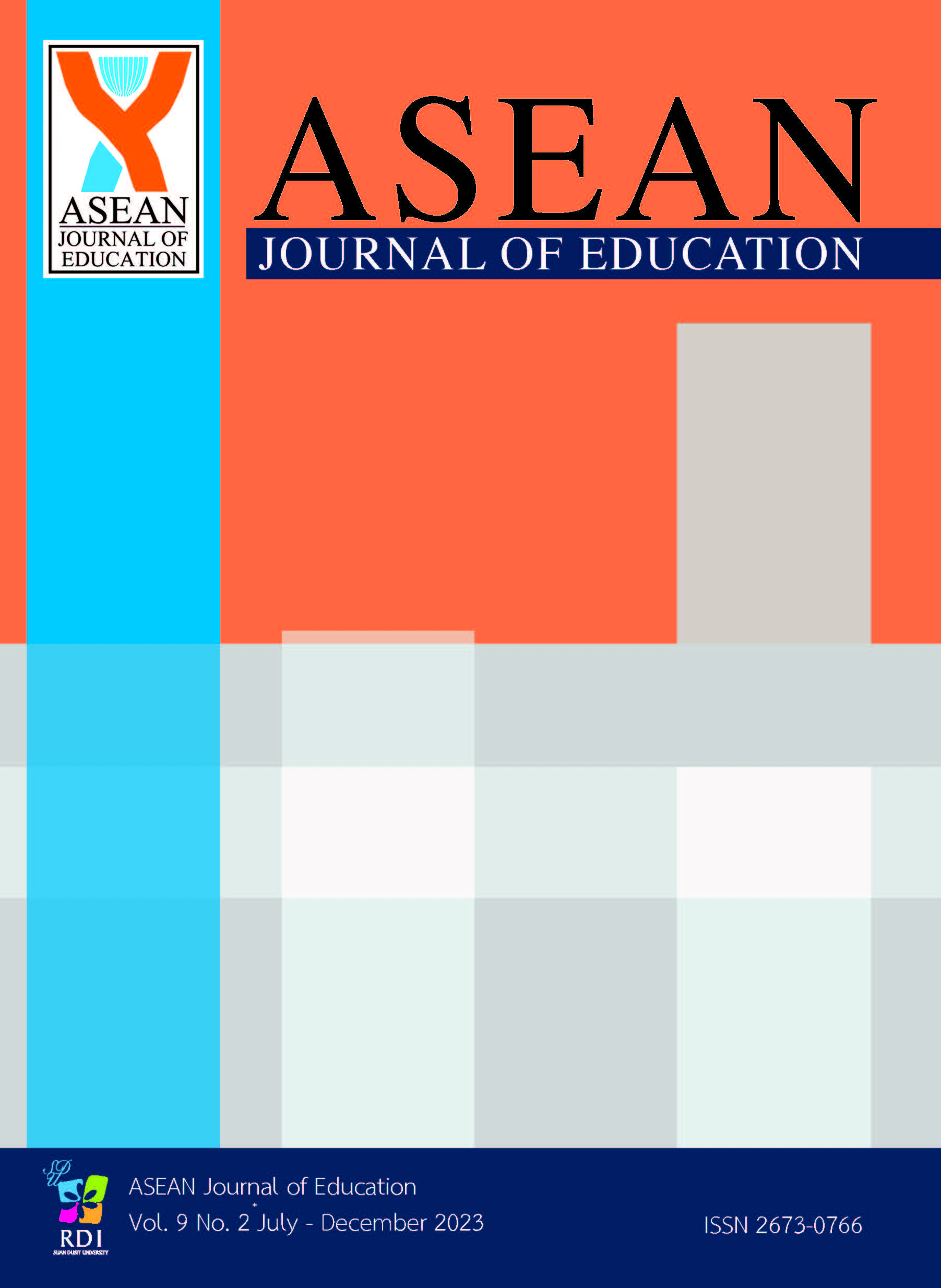An Investigation of Uses of Digital Technology Assisted Teaching of Early Childhood Teachers: Case Study of Teachers at International Schools and Public Kindergarten Schools of the PEASO
Keywords:
Digital technology competency, Early childhood student teacher, Early childhood student, International school, Public kindergarten schoolAbstract
The purpose of this research was to investigate the benefits and level of usage of digital technology in the early childhood classroom. Early Childhood (EC) who were born later (BLC: Born Later Children) where surroundings more fully provided by digital technologies than a First Born Child (FBC), causes of the BLC perceives digital technologies smarter than the FBC. Therefore, the BLC has better creative thinking, ability, and competency development than the FBC (Caldeiro- Pedreira, Renés-Arellano, Castillo-Abdul, & Aguaded, 2022) at the same time the BLC is finished to be total dimensional growth to preach their future characteristics. In this way, early childhood student teachers (EC Teachers) must have digital technology competences leading to learning management processes or felicitating and responding ECSs’ attentions and needs. The objectives of this study were to (1) investigate competences of usage, usage level, bene ciary, technological problem, and obstacle of EC Teachers, and (2) to investigate competences of usage, usage level, beneficiary, technological problems and obstacles of EC teachers based on different ages, nationality, experience, school, frequency of usage, and objective. Data was collected by online questionnaire from EC teachers at ISs and PKSs of the PEASO, and then the quantitative data were analyzed by statistics. It was found that: (1) usage of digital technologies assisted teaching of EC teachers, teachers focused on objectives, competence, usage level of digital technologies assisted teaching. There was a statistically significant benefit of .05, (2) there was statistically significant difference at .05 of usage level of digital technologies assisted teaching of EC teachers, (3) there was statistically signific nt difference at .05 of usage level of digital technologies assisted teaching of EC teachers on objectives, competence, usage level of digital technologies assisted teaching, and beneficiary, and (4) there was statistically significant difference at .05 of usage level of digital technologies assisted teaching of EC teachers that frequency of use was different.
References
Aditya, B. R., Ismiatun, A. N., Atika, A. R., & Permadi, A. (2022). Digital disruption in early childhood education: a qualitative research from teachers’ perspective. Procedia Computer Science, 197, 521-528.
Anderson, L. M., Shinn, C., Fullilove, M. T., Scrimshaw, S. C., Fielding, J. E., Normand, J., ... & Task Force on Community Preventive Services. (2003). The effectiveness of early childhood development programs: A systematic review. American journal of preventive medicine, 24(3), 32-46.
Apaydin, Ç., & Kaya, F., (2020). An analysis of the preschool Teachers' views on alpha generation. European Journal of Education Studies, 6(11), 123-141.
Bada, S. O., & Olusegun, S. (2015). Constructivism learning theory: A paradigm for teaching and learning. Journal of Research & Method in Education, 5(6), 66-70.
Caldeiro-Pedreira, M. C., Renés-Arellano, P., Castillo-Abdul, B., & Aguaded, I. (2022). YouTube videos for young children: an exploratory study. Digital Education Review, (41), 32-43.
Krejcie, R. V., & Morgan, D. W. (1970). Determining sample size for research activities. Educational and psychological measurement, 30(3), 607-610.
Kruearchaisu, P. (2007). Trends of information technology. Retrieved from http://www.bcoms.net/temp/lesson12.asp
Likert, R. (1967). The method of constructing and attitude scale. In reading in Fishbein, M (Ed.), Attitude theory and measurement.
Makharova, G., Nurzhanova, S., Adilbayeva, U., Dossanova, A., & Aimagambetova, M. (2022). The Level of Efficiency of Using Digital Resources for Developing Primary School Students' Linguodidactic Potential. World Journal on Educational Technology: Current Issues, 14(1), 217-230.
Office of the Basic Education Commission (OBEC). (2021). The announcement on The OBEC’s policy and main emphasis of fiscal year 2023. (Poster; In Thai)
Office of the Basic Education Commission (OBEC). (2022a). Evaluation report on learner quality (NT) for Grade 3 of the academic year 2022, issue 1: a form of evaluation report of the country (Country01).
Office of the Basic Education Commission (OBEC). (2022b). Evaluation report on Reading Test (RT) for Grade 1 of the academic year 2022, issue 1: a form of evaluation report of the country (Country 01).
Ritsomboon, K. (2023). Teachers’ opinions on uses of technology to educational management of Anurajaprasit School. Retrieved from http://www.edujournal.ru.ac.th/AbstractPdf/2560-2-1_1509968799_isbkk7-sec1-0031.pdf
Ruíz-Palmero, J., Guillén-Gámez, F. D., & Tomczyk, Ł. (2023). Permanent training as a predictor of success in the digital competence of Education teachers carrying out the online tutorial action. Revista Electrónica Interuniversitaria de Formación del Profesorado, 26(1), 1-12.
Srisa-ard, B., & Nilkeaw, B. (1992). Population reference when using rating scale instrument to a sample. Journal of Educational Evaluation, 3(1), 22-25.
Tasarabiab, P., Juttiphol, A., & Tipmas, W. (2019). The uses of information technology for learning management of teachers in private Islamic schools in Nakhon Sri Thammarat. Narkbhutparitat Journal Nakhon Si Thammarat Rajabhat University, 11(1), 127.
Tiangtrong, R., & Chatrupracheewin, C. (2022). An investigation of information technology uses for learning management of Sukhothai Primary Education Area 2’ s teachers. Journal of Roi Kaensarn Academi, 7(8), 404-418.
Wangkeawhirun, T., & Meekopthong, S. (2022). The development of Thai teacher’s needed skills in the digital age. Retrieved from https:// elibrary.ksp.or.th/doc_num.php?explnum_id=5442
Ziatdinov, R., & Cilliers, J. (2021). Generation Alpha: Understanding the Next Cohort of University Students. European Journal of Contemporary Education, 10(3), 783-789.
Downloads
Published
How to Cite
Issue
Section
License

This work is licensed under a Creative Commons Attribution-NonCommercial-NoDerivatives 4.0 International License.
1 All articles will undergo a formal peer-review. A panel of experts from within or without the university will examine the article; approval from a minimum of two experts is required for publication. Revisions posed by the experts must be completed by the research prior to publication.
2 Once published in the ASEAN Journal of Education, the article becomes intellectual property of Suan Dusit University. Duplication, in full or part, requires permission from Suan Dusit University.
3 Excluding errors incurred during printing, author(s) are responsible for the content of their articles.






